GA4 vs Universal Analytics – Can you migrate to GA4?
Google Analytics Universal Analytics is largely an ecosystem that is session based. Meaning that it tracks user activities in a single sitting. This single sitting is defined as the time a user spends sitting on his/her computer and performing activities on your website. This single sitting spans for a time period before the user turns inactive for 30 mins (default setting) or till 23:59:59 within a particular date.
GA4 is a user centric ecosystem instead. All user activities are now tracked using events and they are clubbed together for a distinct user. The ecosystem is evolving towards tying user activities across multiple devices like Desktop, Mobile and Tablets. It also focuses on tracking activities on mobile apps which was a critical missing element in Universal Analytics.
Combining web and app, GA4 promises to become a more comprehensive tracking ecosystem that will cater to the “mobile first” UI/UX design and interface. This transitional shift is therefore an attempt by Google Analytics to align itself with the online consumer behavior.
What is still missing in GA4?
1. Standard Reports for Marketers: The new GA4 interface does not seem as user friendly for marketers who are looking for a quick standard report that presents them critical information like Landing Page Acquisition, Behavior and Conversions in a single report. Information pieces like Landing page performance, report need to be custom configured in GA4.

2. Web and mobile Performance statistics: performance statistics like Avg. Page Load time is currently not available in GA4. Avg. Page Load Time is a reliable metric to understand the performance of web pages. This metric helps understand the time taken for pages to load and is deeply correlated to Bounce Rate of Landing Pages. Hopefully, GA4 will incorporate this feature soon.
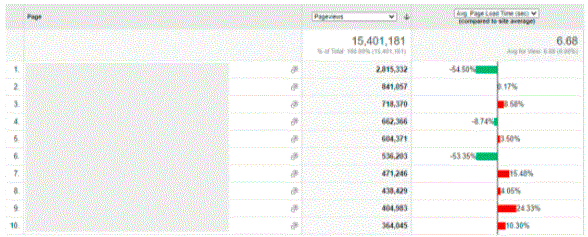
3. Internal Search Terms: If your website runs an Internal Search, unlike Universal Analytics, GA4 does not have a dedicated Search Term tracking report section. It alternatively relies on using events in order to track that information. This would mean that in order to access that information, one would need to rely on custom reports in order to retrieve that information.

4. Consumption, Behavior and Conversion Metrics in single report: the new GA4 interface does not provide metrics like Unique Pageviews, Avg. Time on Page, Bounce Rate and Conversion Rate in a single reporting structure. The standard reports in GA4 will not combine these metrics together. This information will now need to be custom configured.
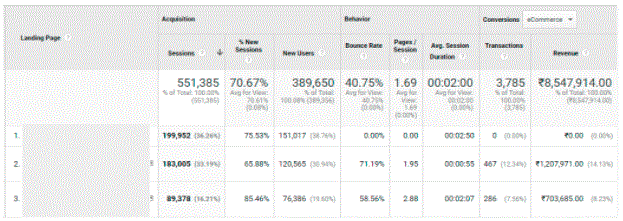
5. Behavior Reports: GA4 does not provide reports such as New vs Returning, Frequency and Recency, Engagement, Session Quality Report that are helpful in understanding key features of user behavior and engagement.
5.1 The New vs Returning User Report showcases the difference in consumption, behavior and conversions of first time users and subsequently returning users. This is a very helpful segment that allows business to understand the effectiveness of their web platforms w.r.t. Returning users and how best to target new users into becoming returning users.

5.2 Frequency & Recency report provides an easy interface to businesses in terms of understanding frequency of users w.r.t. Web consumption. This report is currently not featured in GA4.
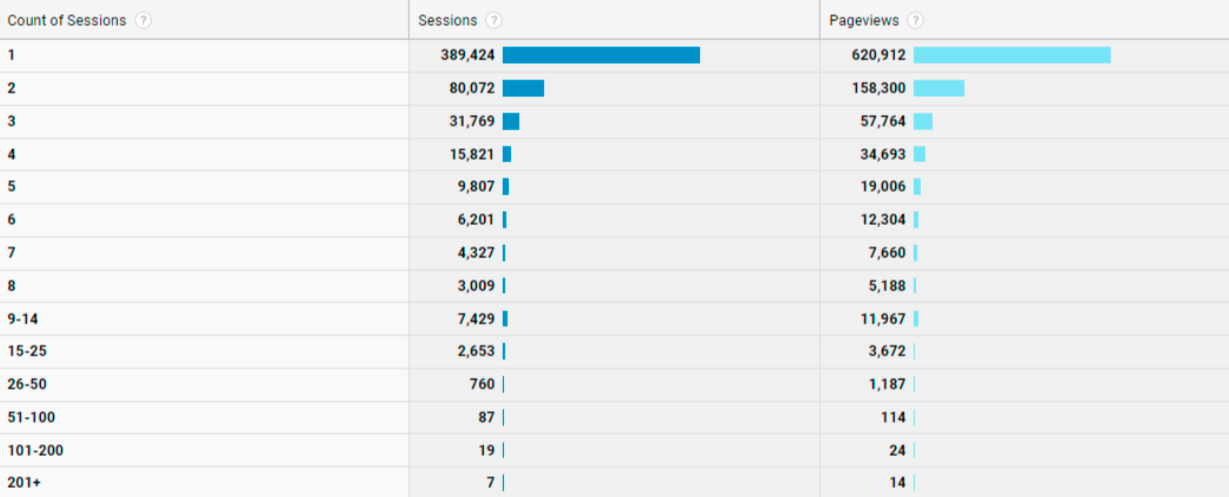
5.3 Engagement: This report indicates session duration bands w.r.t. Traffic and Transactions. This again is a great report for businesses to understand user behavior w.r.t. Time spent navigating the website and performing a transaction. Presently, GA4 reporting interface does not accommodate this particular report.

5.4 Session Quality: This report in universal analytics showcases various bands of sessions incurred by users while browsing the website. This again provides an excellent view to businesses in terms of understanding the recurrency of users while converting on the website.

6. Ecommerce: The ecommerce reports in GA4 are less elaborate than Universal Analytics. Reports such as Shopping Behavior, Checkout Behavior, Product Performance, Sales Performance, Product List Performance, Brand Performance etc. are missing. These are helpful in quick consumption and diagnosis of Ecommerce analytics in Universal Analytics and currently GA4 ecommerce analytics is heavily dependent on custom reports over standard reports.
6.1 Universal Analytics Overview Report
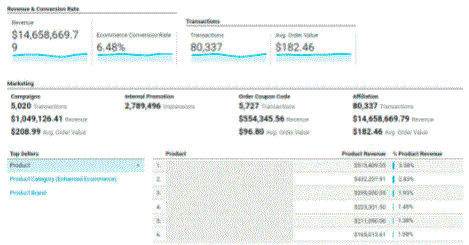
6.2 Universal Analytics Shopping Behavior Analysis
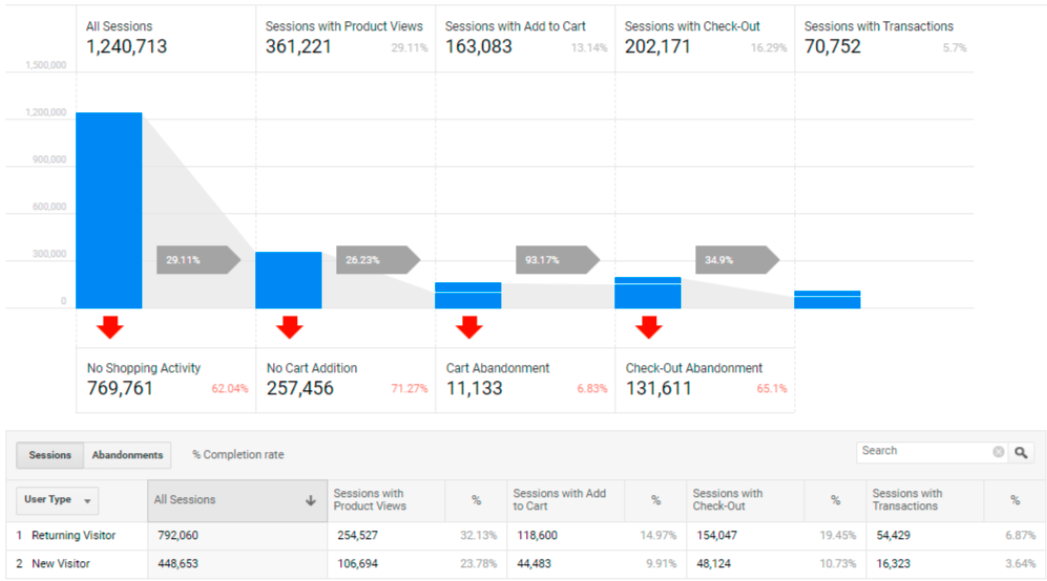
6.3 Universal Analytics Checkout Behavior
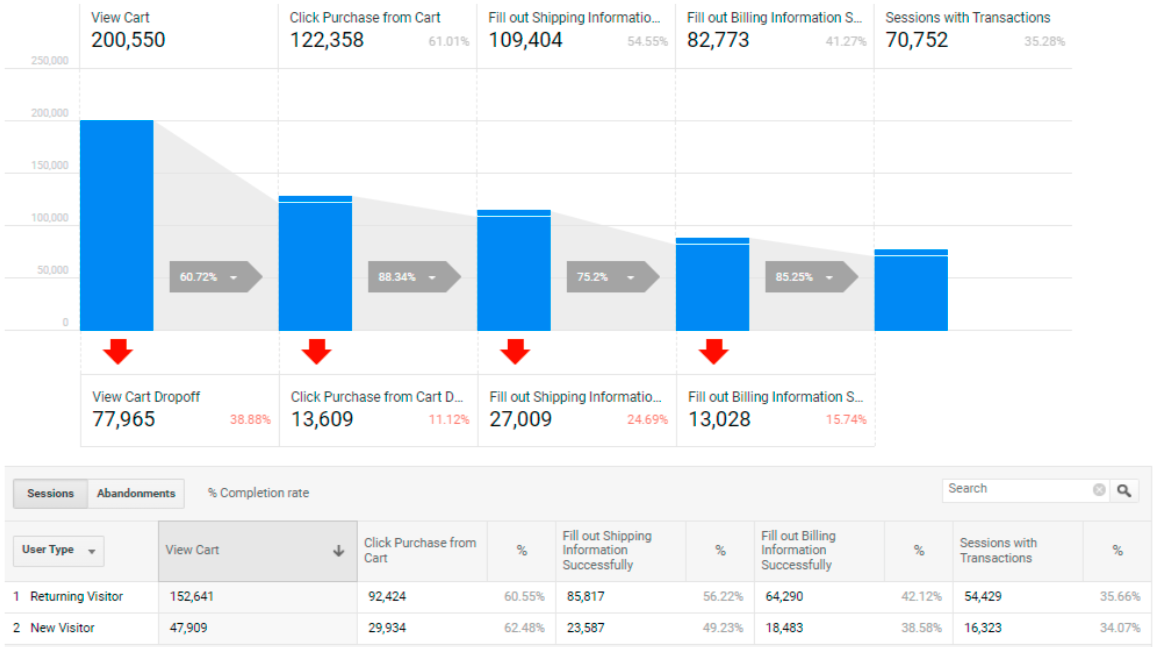
6.4 Universal Analytics Product Performance
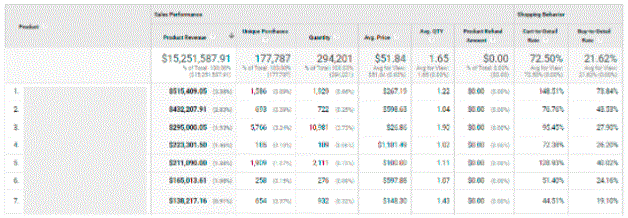
6.5 Universal Analytics Sales Performance
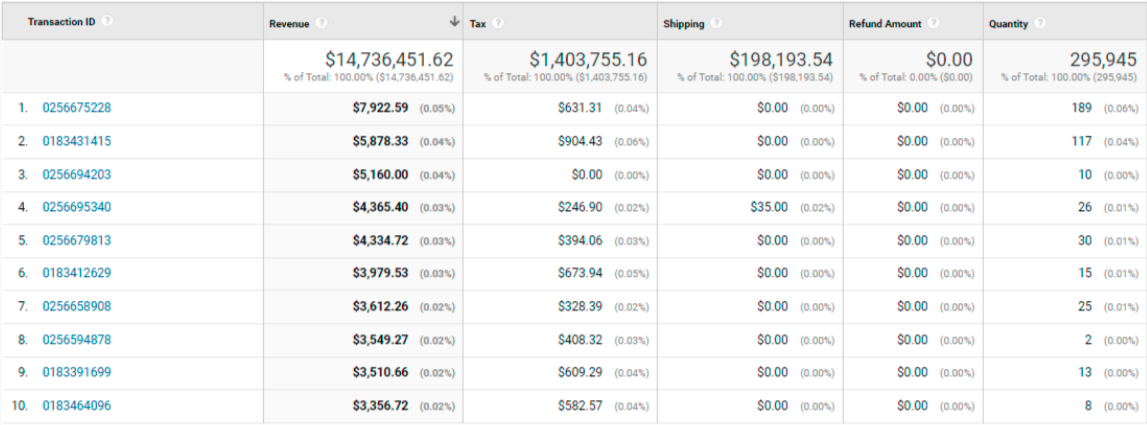
6.6 Universal Analytics Product List Performance
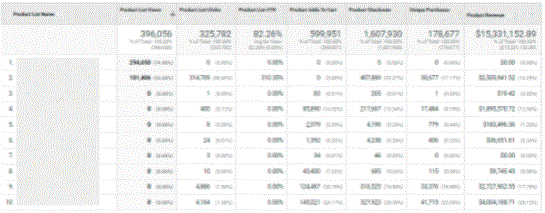
7. Multi-channel Funnels: Similar to E-commerce, GA4 reports currently do not provide in-depth and user friendly reports under the Multi-Channel Funnels section. This section allows businesses to measure conversions across a range of attribution models. Eg, Last clicks, First Click, Linear, Time Decay etc. GA4 has a model comparison section which is way less extensive than Universal Analytics in terms of delivering all the below information.
7.1 Overview Report:
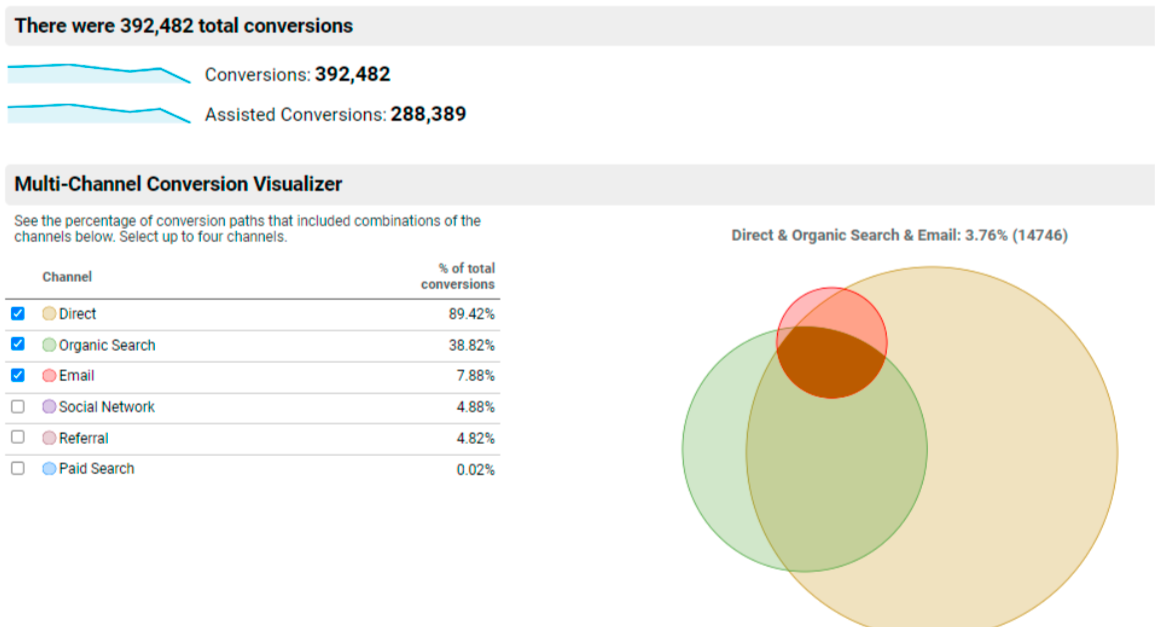
7.2 Assisted Conversions
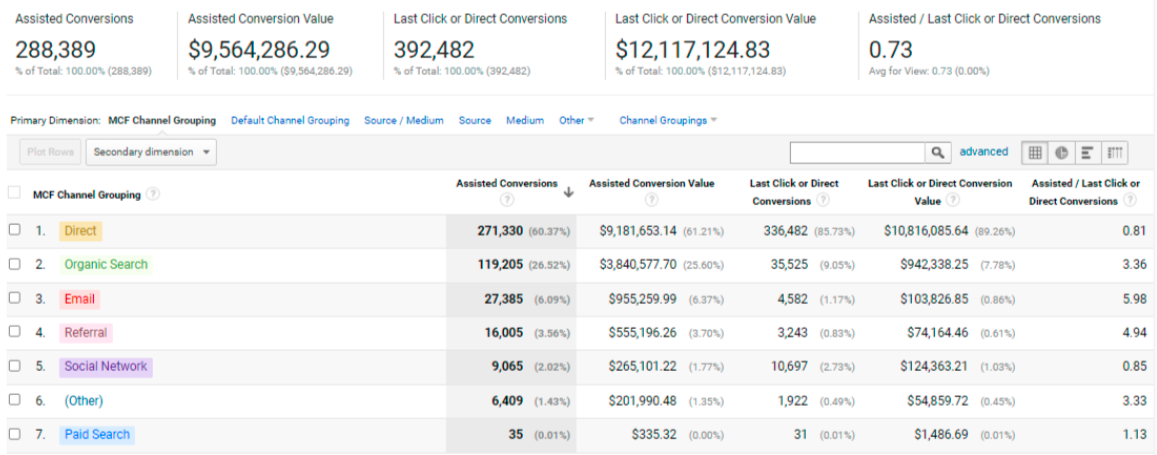
7.3 Top Conversion Paths
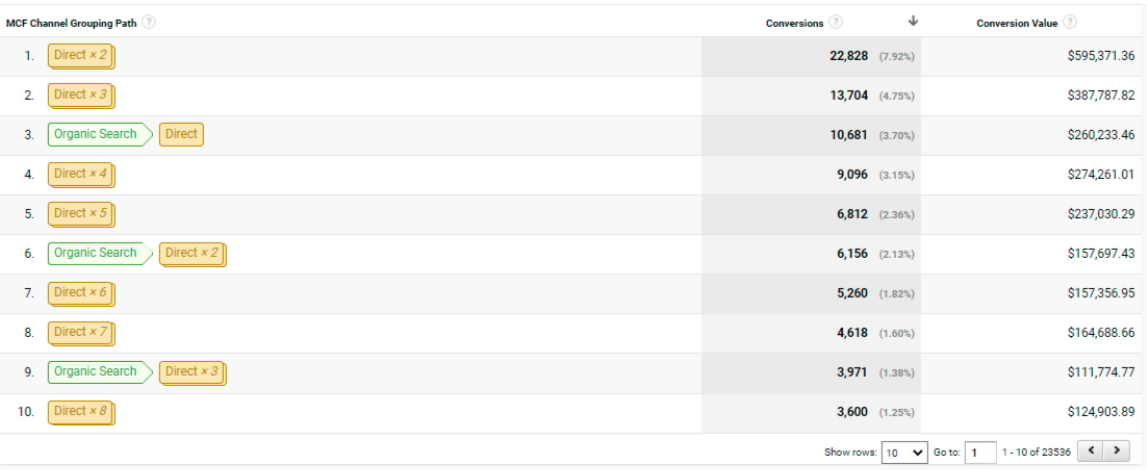
7.4 Time Lag
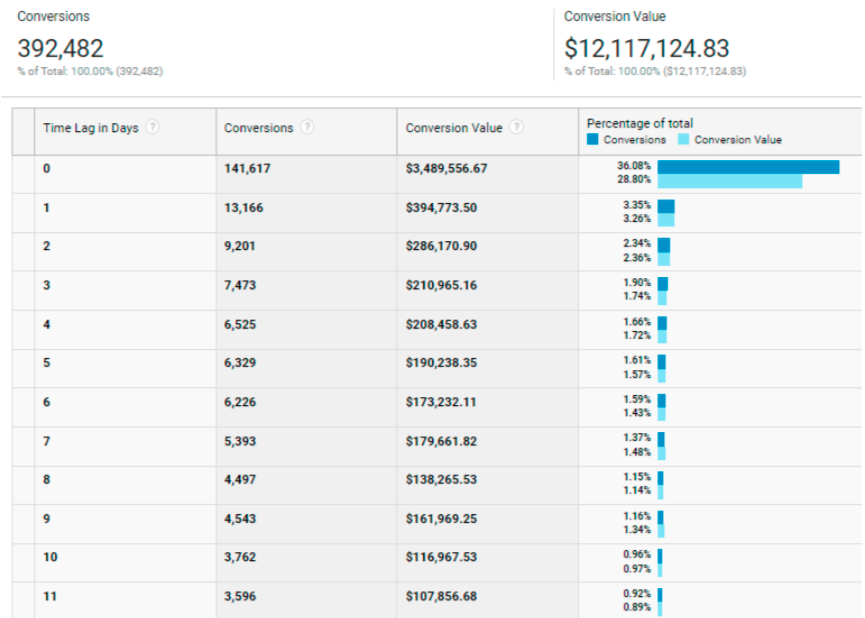
7.5 Path Length
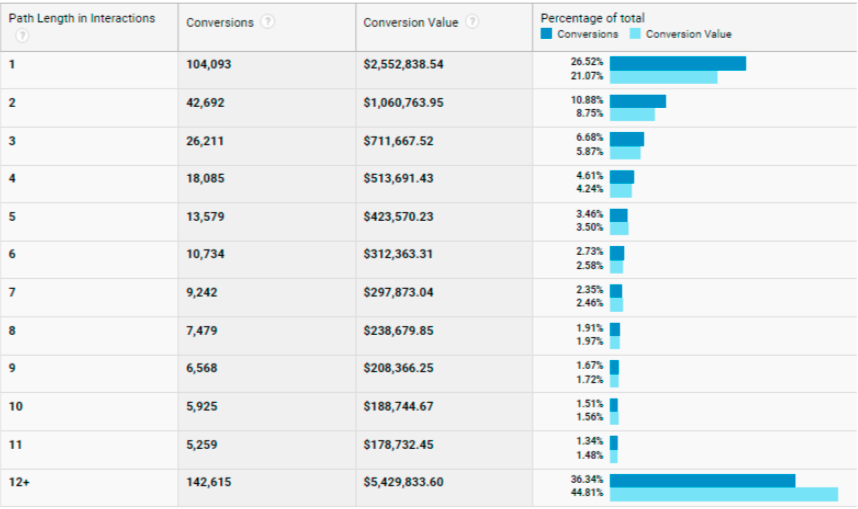
7.6 Model Comparison Tool

8. Views within Properties
GA4 also operates as a specific single property. It does not provide multiple views for segmenting your data. For example, in Universal Analytics, businesses have the luxury of creating specific views that can segment data over demographics like Region, City, User Types and other. The EMEA or APAC region teams and management can be provided access to Views specifically for EMEA and APAC. Similarly, you can create a RAW data view that includes internal traffic and a “Prod” view that has all internal traffic filtered out keeping only the client data.
This feature can be leveraged by adding multiple properties in GA4 which is not convenient as multiple properties will act as distinct tracking ecosystems within GA4.
In general, GA4, though having lots of additional features, still lacks the extensive generic reporting that Universal Analytics offers. GA4 seems like an ecosystem that will rely heavily on other reporting tools like Data Studio to build customized reports. This means that in terms of customization of end reports, there is a heavier reliance on external tools than the interface itself.
It makes sense as GA4 in its set-up also provides raw data in Big Query for businesses to access. However, the limitation is that unlike Universal Analytics where there are descriptive user friendly reports available in a very easy to consume manner, GA4 will require you to heavily depend on reporting tools to get you that very same information.
An example of examining this is to use the analogy of a new house that is built by the builder. The house has the basic structure and layout for rooms and interiors. It also has free space front and back for the end user to customize. That is how Universal Analytics exists with its simple implementation providing basic consumption information and reports. GA4 is like a plot of land with some basic amenities like water supply, electricity available, but the rest of the construction of rooms and spaces is left to the buyer to construct as per their customized needs. Also, with the change in methodology of tracking based on events rather than cookies, makes both tracking ecosystems unique in their own way.
Based on the above explanations, it is fair to say that GA4 is a great new ecosystem to integrate to the existing Universal Analytics ecosystem. It is not a replacement for Universal Analytics at this time. Having both set-ups run parallelly will allow businesses to leverage the best of both the worlds.

